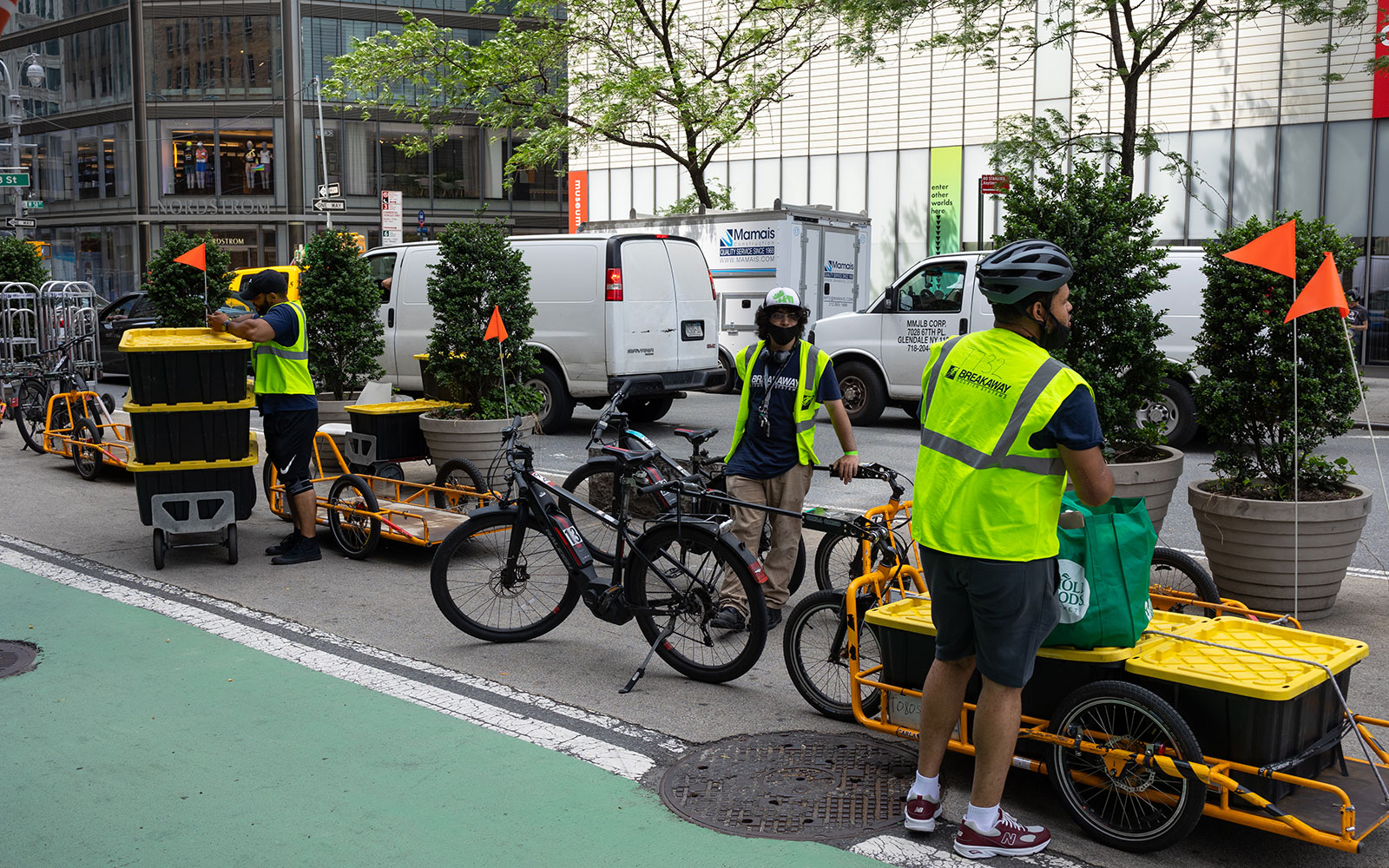Nathan Berman has a message for Gov. Kathy Hochul and the state legislature.
The developer, whose specialty is converting office buildings to apartments, doesn’t like something about the temporary tax break that state lawmakers just passed to encourage such projects: It requires some units to be permanently affordable.
“We’ve never had a situation where tax breaks burn off, but you have the affordable units forever,” he told Crain’s. “It’s a package that needs to be evaluated.”
Actually, we have had such a situation. In 2016, New York City adopted Mandatory Inclusionary Housing. Under that law, which offers no tax break, multifamily projects above a certain size that benefit from rezoning must include income-restricted apartments in perpetuity.
That said, the de Blasio-era program was designed with the assumption that projects would receive 421a, the state’s property tax break for multifamily projects in the city. At the time, the tax benefit lasted only up to 35 years.
As it happens, the tax break for conversions that begin by July 2026 also lasts 35 years. Projects that start by July 2028 get a 30-year break, and those beginning by July 2031 get 25 years.
Thousands of units have been built under MIH, so it’s clearly feasible to marry a temporary tax benefit with permanent affordability. And we have reason to expect it to work: The Department of City Planning did a financial feasibility study before the measure passed.
Berman is correct, however, to imply that the success or failure of the state’s conversions law will become apparent soon enough. Either developers will use it or they won’t. For each potential project, the determination will come down to math.
Last year, Berman advised Mayor Eric Adams not to spend any political capital lobbying for the conversions bill debate in Albany because developers wouldn’t use it anyway. This year’s version makes more sense, but the jury is still out.
Berman has done a number of conversions without a state tax break and doesn’t plan to use the new one for his project at 219 and 235 East 42nd Street, the former Pfizer headquarters. All 1,500 rentals will be market-rate.
Some lawmakers feel developers should choose the option that creates affordable housing, because it’s the right thing to do. These legislators cannot seem to understand that usually there is no such choice to be made.
The highest bids to buy old office buildings will come from developers planning the most profitable projects. Those are the bids that will be accepted, and those are the projects that will be financed. These are the developers who can raise money from investors for new projects. (On occasion, a mission-oriented fund will finance a project that puts union labor and affordability above profit, but these are rare and must outcompete profit-driven rivals.)
The good news is that even market-rate developments make New York City more affordable, because their new residents will free up more affordable apartments for others. The Minneapolis Fed recently offered a good analysis of how that works, and the National Multifamily Housing Council posted its own Thursday.
What we’re thinking about: Have you ever seen city commissioners rally at City Hall for the City Council to pass legislation, as they did Tuesday in the name of removing sidewalk sheds? Email me at eengquist@therealdeal.com.

A thing we’ve learned: Since the start of the Adams administration, cargo bikes (like those pictured above) have delivered 10 million packages in New York City — more than in any other U.S. city, according to Deputy Mayor Meera Joshi. Two cargo bikes can replace one box truck, reducing carbon emissions by 14 tons per year.
Elsewhere…
— Real estate attorney Adam Leitman Bailey, hired to fight the landmarking of two brownstone-lined blocks of Bedford-Stuyvesant, claimed the proposal was anti-Semitic because it would make it harder for Orthodox Jews with large families to move there. But the Landmarks Preservation Commission approved the historic district, Gothamist reported.
Commissioner Michael Goldblum, a practicing Jew, called the antisemitism charge “weak,” saying, “To misuse the claim is to diminish its power. When the time comes that we urgently need to rally against true racists and antisemites, those who have worn the phrase out by overplaying it may find that it is more easily dismissed by the broader public.”
— Data research firm Social Explorer found the number of New Yorkers under age 20 fell by 186,000, or 9 percent, to 1.8 million from 2020 to 2023, the New York Times reported. Families moved out seeking more space or lower housing costs during the pandemic, perhaps in part because more parents are now able to work from home.
— Passing the Faith-Based Affordable Housing Act should have been easy. Who would stand in the way of churches building on their own land? But the state bill ran into resistance from the not-in-my-backyard crowd, according to an op-ed by the legislation’s sponsor, Sen. Andrew Gounardes. “Efforts at preserving an undefined ‘neighborhood character’ usually lack formal criteria and function to advance exclusionary community preferences and even racial bias,” he wrote.
Closing Time, by Matthew Elo
Residential: The priciest residential sale Thursday was $36 million for a 6,200-square-foot co-op on the ninth floor of 2 East 67th Street in Lenox Hill. Serena Boardman and Maria Bazo of Sotheby’s International Realty had the listing.
Commercial: The largest commercial sale of the day was $96.5 million for a 15-story office building at 101 Franklin Street in Tribeca. Columbia Property Trust sold the 200,000-square-foot property to TPG Capital.
New to the Market: The highest price for a residential property hitting the market was $15.75 million for a 6,800-square-foot townhouse at 16 East 94th Street on the Upper East Side. Michele Kleier, Samantha Kleier Forbes and Sabrina Kleier Morganstern of Kleier Residential have the listing.
Breaking Ground: The largest new building application filed was for a 58,500-square-foot, mixed-use property at 240 19th Street, also known as 665A Fifth Avenue, in Greenwood. Permits were filed by Ilya Vilnits of the Vilnits Group.
